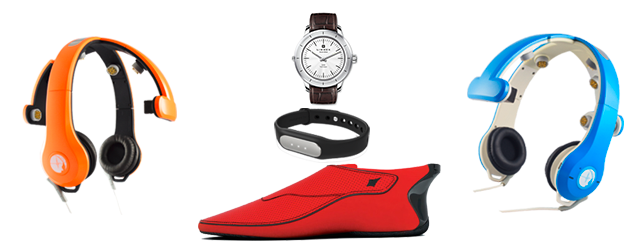According to eMarketer, in 2015, 39.5 million U.S adults (18 and over) used wearable devices. This mainly includes smartwatches and fitness tracker – with an overall increase of 57.7 % in 2014. The addition of Apple Smartwatch in 2015 had many industry experts to expect the Apple Watch to unwind the short trend of fitness bands and evolve it into a necessary addition to lifestyle. However, what did actually happen in the wearables business world? What became the most successful wearables for consumers until now?
It cannot be denied that 2015 was a successful year for the wearable ecosystem. Several categories of wearable such as wrist wear, modular, clothing, eyewear, ear wear and more emerged onto the consumer scene. According to IDC, smart watches and wrist-worn fitness trackers are the sitting front and center. Their popularity is growing the entire value of the wearable market. Meanwhile, no other type of wearable device is predicted to break into the mainstream.
Source: Statista.com
This is not bad news, the competition between wristband trackers and smartwatches according to Ramon Llama, “a lot of people think multi-function devices will clobber dedicated devices.” Llama is an IDC research manager specifically for wearables and mobile phones. In fact, IDC research has shown that Apple sold roughly 7.5 million watches during the past two quarters. Simultaneously, Fitbit sold approximately 9.2 million fitness tracker.
Source: statista.com
Even so, there are strong competitors with this sector from Xiaomi to Apple and even with Fitbit’s focus on fitness tracking continues to resonate well with customers. Fitbit is and will to be the top activity tracker band based on the NPD Group’s autumn 2015 predictions. This proves that consumers appreciate the relative affordability of activity trackers which typically suits all pockets. Even if they are experience a class action lawsuit, consumers are happy with their product for the price. Smart watches, however, generally cost $300 or more. Some people haven’t seen the extent to their value proposition, yet, but soon the watch will be more convenient because it reduces the amount of tech on one’s arm. Nonetheless, both product categories in the market are grabbing consumers’ attention. There is possibility that they can co-exist successfully in their niche market.
In conclusion, the Apple Watch dominated the wearables conversation for much of 2015. In 2016, with the second –generation of Apple Watch, Apple will make their smart watch even hotter. As in an interview with Time, CEO Jame Parks of Fitbit reveal to add “advance sensors” to maintain their competitive edge by providing more accurate data, as well as the top position among activity tracker band. However, life is a chain of surprise. Let’s see if any new wearable player becomes more successful on the consumer market this year.














